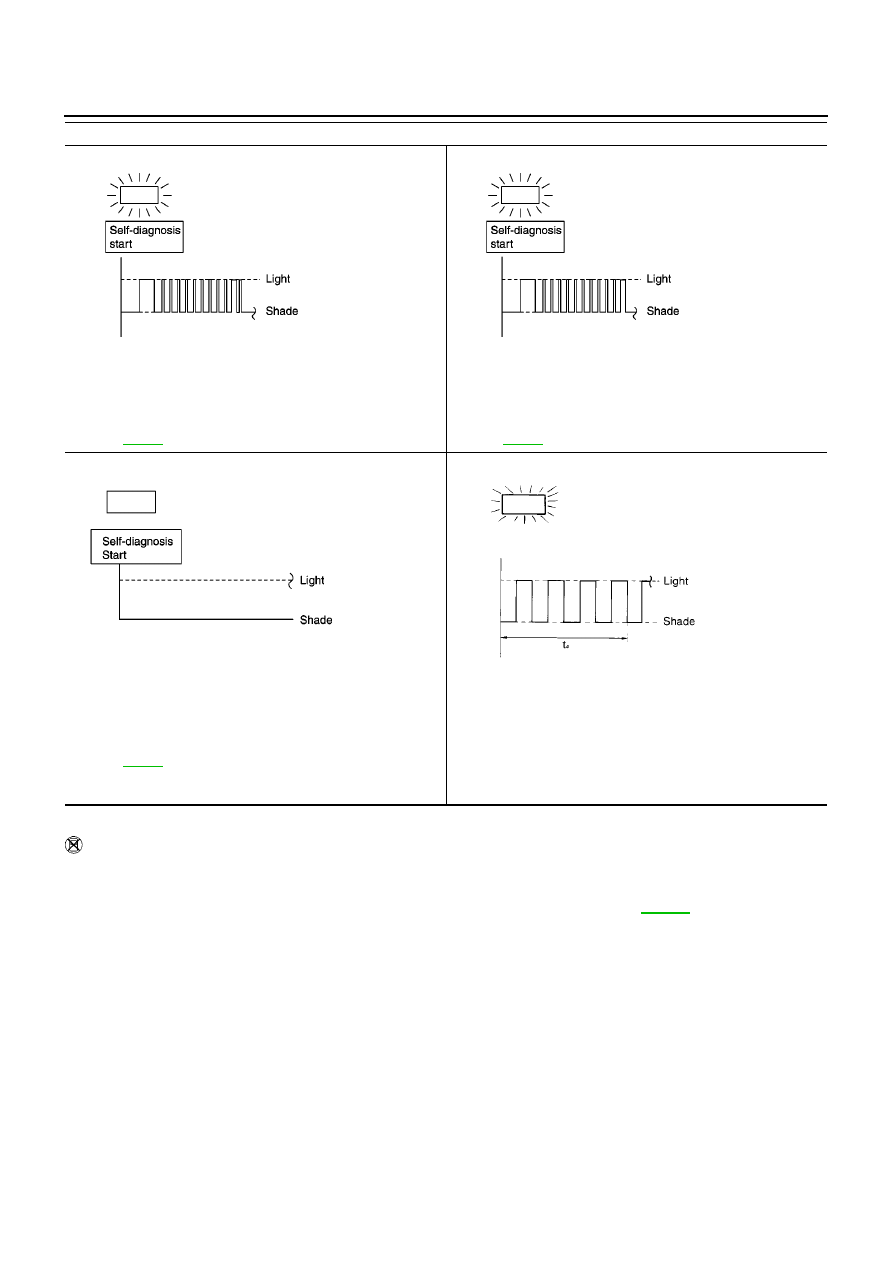Nissan Almera Tino V10. Manual - part 133

AT-256
[EXC.F/EURO-OBD]
ON BOARD DIAGNOSTIC SYSTEM DESCRIPTION
t
1
= 2.5 seconds
t
2
= 2.0 seconds
t
3
= 1.0 second
t
4
= 1.0 second
HOW TO ERASE SELF-DIAGNOSTIC RESULTS (WITHOUT CONSULT-II)
1.
If the ignition switch stays “ON” after repair work, be sure to turn ignition switch “OFF” once. Wait for at
least 3 seconds and then turn it “ON” again.
2.
Perform “SELF-DIAGNOSTIC PROCEDURE (Without CONSULT-II)”. Refer to
.
3.
Turn ignition switch “OFF”. (The self-diagnostic results will be erased.)
10th judgement flicker is longer than others.
Line pressure solenoid valve circuit is short-circuited or discon-
nected.
Þ
Go to LINE PRESSURE SOLENOID VALVE.
Refer to
11th judgement flicker is longer than others.
The ECM-A/T communication line is open or shorted.
Þ
Go to CAN COMMUNICATION LINE.
Refer to
Lamp comes OFF.
PNP switch, overdrive control switch or throttle position switch cir-
cuit is disconnected or TCM is damaged.
Þ
Go to 21. TCM Self-diagnosis Does Not Activate (PNP &
Overdrive Control Switches, and Throttle Position Sensor).
Refer to
Flickers as shown below.
Battery power is low.
Battery has been disconnected for a long time.
Battery is connected conversely.
(When reconnecting TCM connectors.—This is a problem.)
O/D OFF indicator lamp:
SCIA0704E
SCIA0705E
SCIA0706E
SAT804H